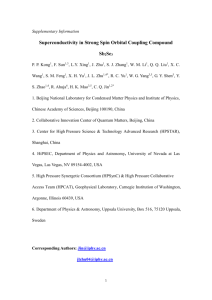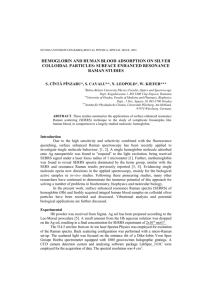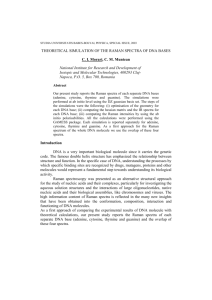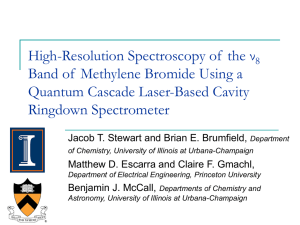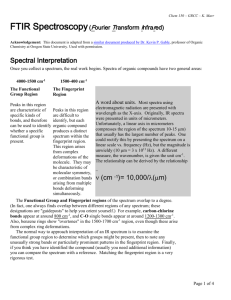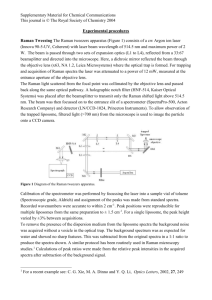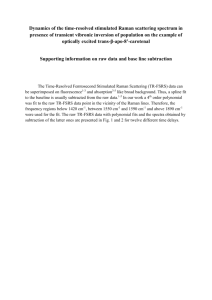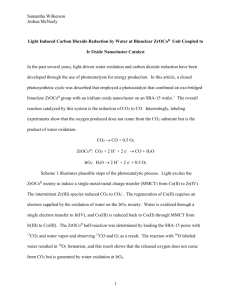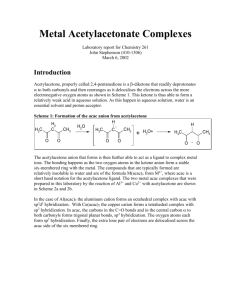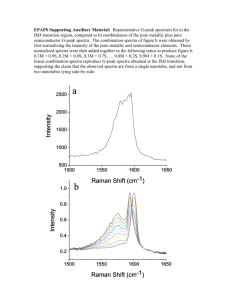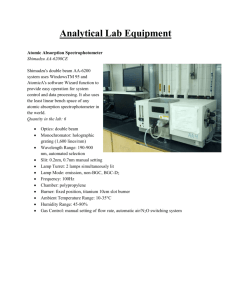Skradin Title Style is Times New Roman 14pt, Bold, centered
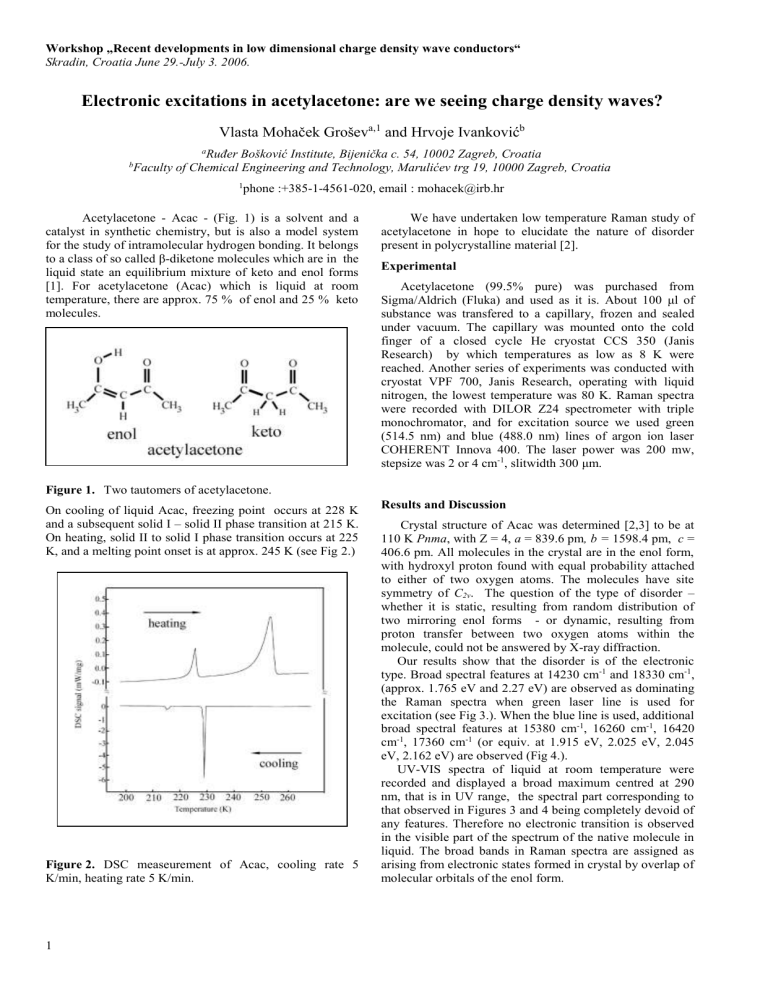
Workshop „Recent developments in low dimensional charge density wave conductors“
Skradin, Croatia June 29.-July 3. 2006.
Electronic excitations in acetylacetone: are we seeing charge density waves?
Vlasta Mohaček Grošev
a,1
and Hrvoje Ivanković
b a Ruđer Bošković Institute, Bijenička c. 54, 10002 Zagreb, Croatia b Faculty of Chemical Engineering and Technology, Marulićev trg 19, 10000 Zagreb, Croatia
1 phone :+385-1-4561-020, email : mohacek@irb.hr
Acetylacetone - Acac - (Fig. 1) is a solvent and a catalyst in synthetic chemistry, but is also a model system for the study of intramolecular hydrogen bonding. It belongs to a class of so called β-diketone molecules which are in the liquid state an equilibrium mixture of keto and enol forms
[1]. For acetylacetone (Acac) which is liquid at room temperature, there are approx. 75 % of enol and 25 % keto molecules.
Figure 1.
Two tautomers of acetylacetone.
We have undertaken low temperature Raman study of acetylacetone in hope to elucidate the nature of disorder present in polycrystalline material [2].
Experimental
Acetylacetone (99.5% pure) was purchased from
Sigma/Aldrich (Fluka) and used as it is. About 100 μl of substance was transfered to a capillary, frozen and sealed under vacuum. The capillary was mounted onto the cold finger of a closed cycle He cryostat CCS 350 (Janis
Research) by which temperatures as low as 8 K were reached. Another series of experiments was conducted with cryostat VPF 700, Janis Research, operating with liquid nitrogen, the lowest temperature was 80 K. Raman spectra were recorded with DILOR Z24 spectrometer with triple monochromator, and for excitation source we used green
(514.5 nm) and blue (488.0 nm) lines of argon ion laser
COHERENT Innova 400. The laser power was 200 mw, stepsize was 2 or 4 cm -1 , slitwidth 300 μm.
Results and Discussion
On cooling of liquid Acac, freezing point occurs at 228 K and a subsequent solid I – solid II phase transition at 215 K.
On heating, solid II to solid I phase transition occurs at 225
K, and a melting point onset is at approx. 245 K (see Fig 2.)
Figure 2.
DSC measeurement of Acac, cooling rate 5
K/min, heating rate 5 K/min.
Crystal structure of Acac was determined [2,3] to be at
110 K Pnma , with Z = 4, a = 839.6 pm , b = 1598.4 pm, c =
406.6 pm. All molecules in the crystal are in the enol form, with hydroxyl proton found with equal probability attached to either of two oxygen atoms. The molecules have site symmetry of C
2v
. The question of the type of disorder – whether it is static, resulting from random distribution of two mirroring enol forms - or dynamic, resulting from proton transfer between two oxygen atoms within the molecule, could not be answered by X-ray diffraction.
Our results show that the disorder is of the electronic type. Broad spectral features at 14230 cm -1 and 18330 cm -1 ,
(approx. 1.765 eV and 2.27 eV) are observed as dominating the Raman spectra when green laser line is used for excitation (see Fig 3.). When the blue line is used, additional broad spectral features at 15380 cm -1 , 16260 cm -1 , 16420 cm -1 , 17360 cm -1 (or equiv. at 1.915 eV, 2.025 eV, 2.045 eV, 2.162 eV) are observed (Fig 4.).
UV-VIS spectra of liquid at room temperature were recorded and displayed a broad maximum centred at 290 nm, that is in UV range, the spectral part corresponding to that observed in Figures 3 and 4 being completely devoid of any features. Therefore no electronic transition is observed in the visible part of the spectrum of the native molecule in liquid. The broad bands in Raman spectra are assigned as arising from electronic states formed in crystal by overlap of molecular orbitals of the enol form.
1
Workshop „Recent developments in low dimensional charge density wave conductors“
Skradin, Croatia June 29.-July 3. 2006.
There are several particularities concerning the intensity distribution between the vibrational transitions (sharp lines superposed onto broad bands) and the underlying electronic transitions. Sometimes vibrational transitions can hardly be seen at all, whereas at other times, the background bands seem to subside. According to Petzelt and Dvořak [4] this is the property observed in infrared spectra of charge-density wave substances. It could be therefore possible that acetylacetone belongs to this class of compounds. rameter spatially non-uniform and correlated only on relatively short distances of the order of 1
m.
Finally you will Ошибка! Источник ссылки не найден.
come to the references, which are not supposed to have a heading, but if you need it, use Skradin Heading style
References
Figure 3.
Low temperature Raman spectra. Excitation line is green Ar line (19435 cm -1 ), scale in absolute wavenumbers.
Acknowledgment The UV-VIS spectra were recorded at the Faculty of Medicine, Zagreb, by courtesy of Blaženka
Foretić, PhD. Thanks are due to Osor Barišić for helpful discussions.
Figure 4. Low temperature Raman spectra of Acac, excitation line is blue (20458 cm -1 ).
References:
[1] J. Emsley, Structure and Bonding 57 (1984) 147.
[2] R. Boese, M. Zu. Antipin, D. Bläser, K. A. Lyssenko, J.
Phys. Chem. B 102 (1998) 8654.
[3] M. R. Johnson, N. H. Jones, A. Geis, A. J. Horsewill,
H. P. Trommsdorff, J. Chem. Phys. 116 (2002) 5694.
[4] J. Petzelt, V. Dvořak, in Vibrational Spectroscopy of
Phase Transitions, ed. Z. Iqbal, F. J. Owens, Academic
Press 1984., p.124.
2
